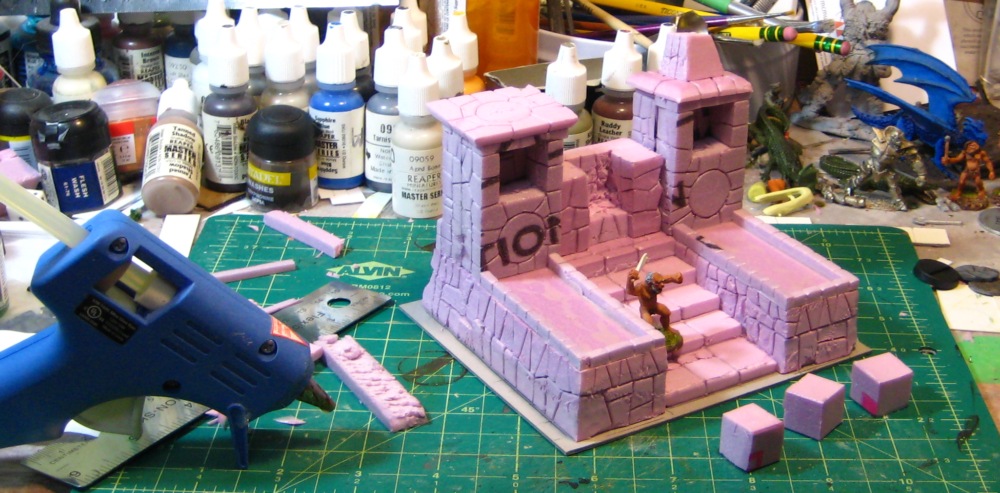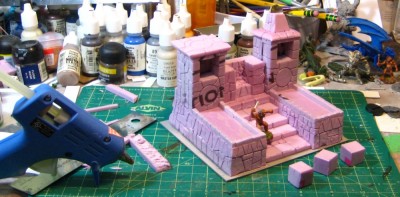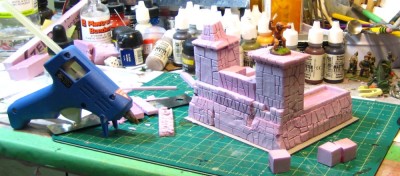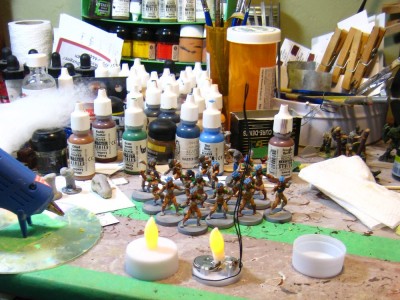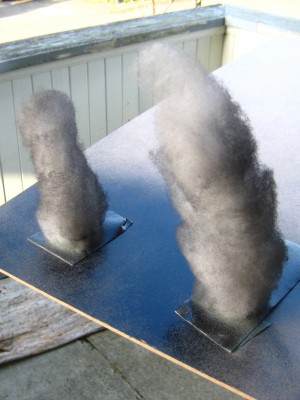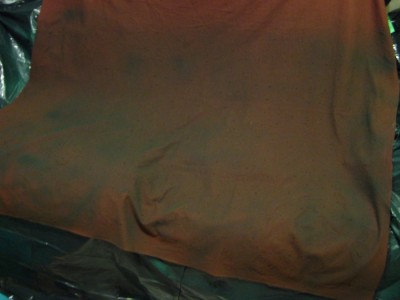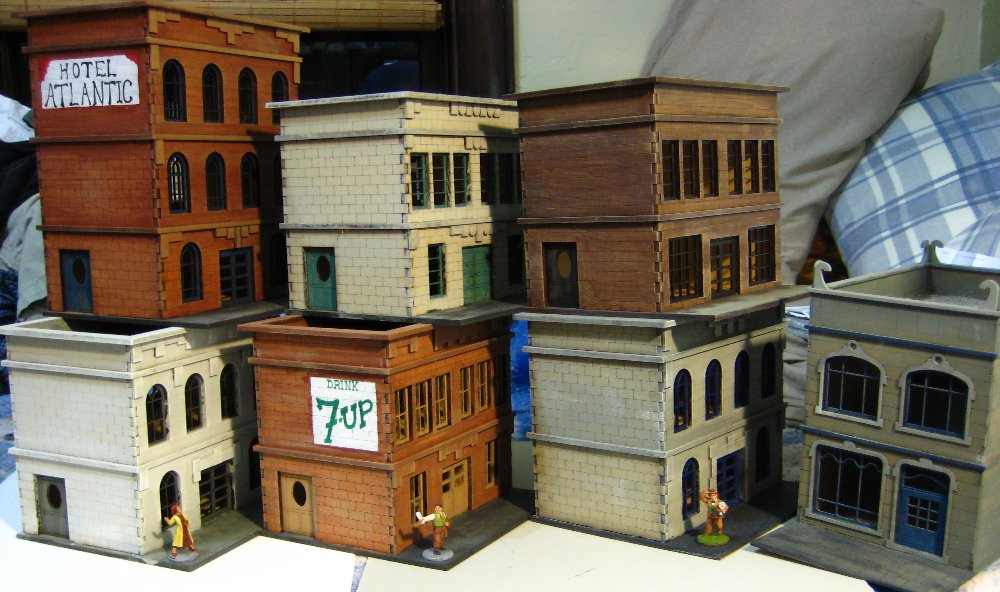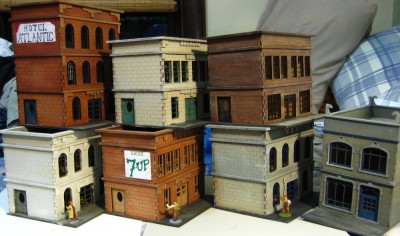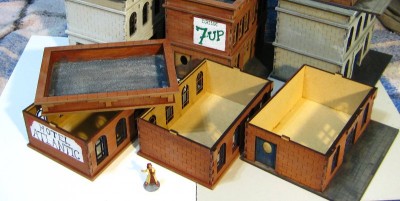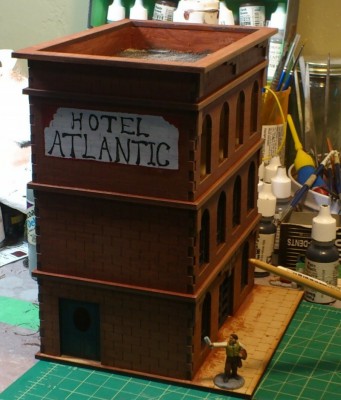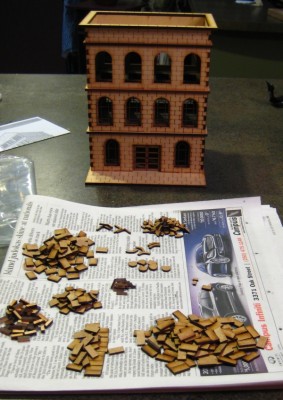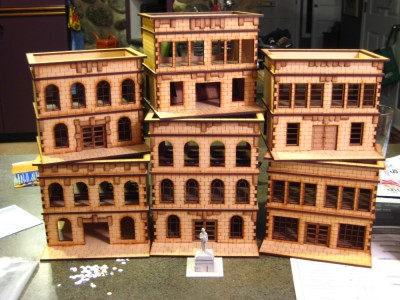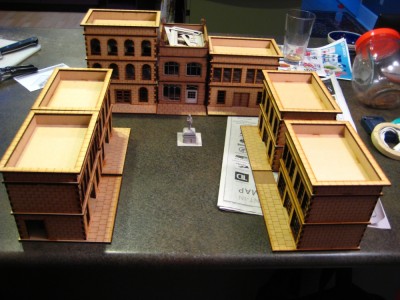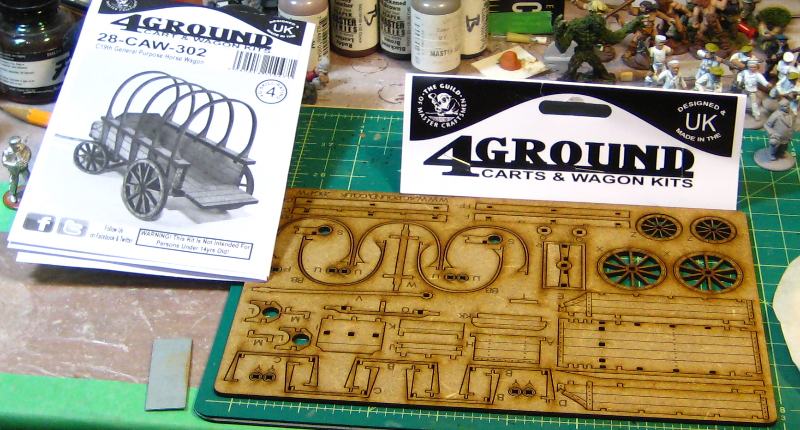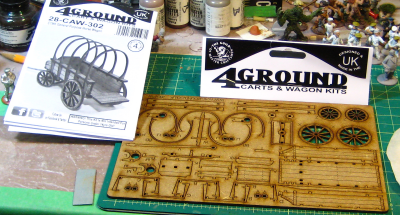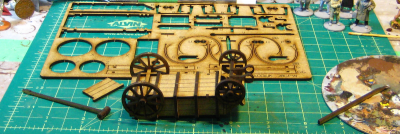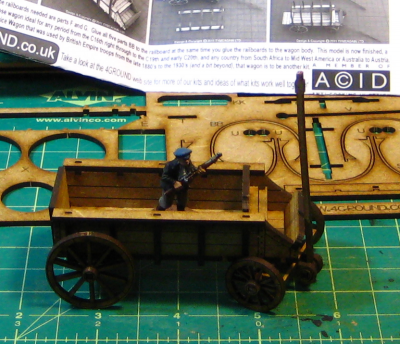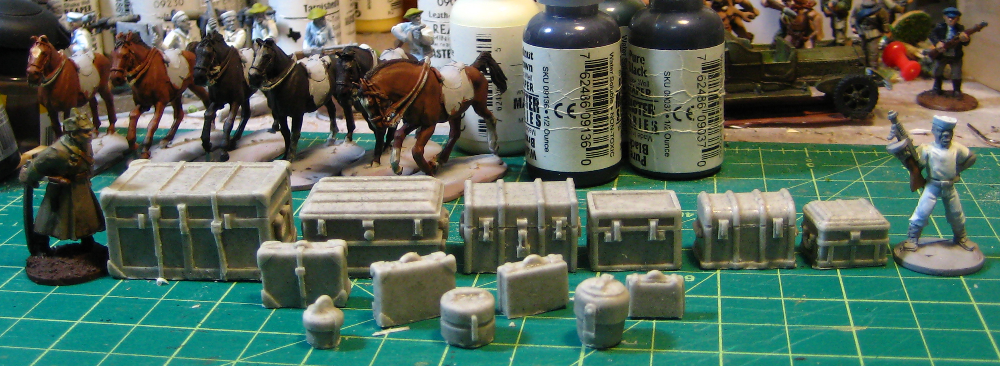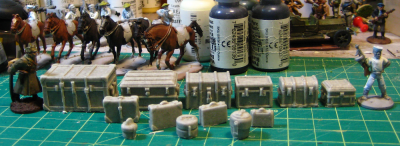A while ago via Google Plus, I stumbled over the Terrain Wench and her work, specifically the nicely done Lizardman spawning pool she had created. She’d taken the trouble to do a really well-done video of her technique for doing stonework in styrofoam insulation board – embedded below.
(She has more videos on YouTube as well.)
As I mentioned in the last post, I’ve been wanting to build a new scoreboard setup for my Blood Bowl pitch, one with a few features I missed in the first one built last December. I sat down and started it last night, and except for a few details here and there it was one of those projects that has (so far!) just worked, and in person it looks pretty much like I was visualizing it in my head. Always cool when a project works out like that.
The base is about 5.5″ wide and 4.5″ deep, with the temple made out of two different thicknesses of pink styrofoam insulation board and standing 4″ tall to the top of the right-hand tower. The stairs will have a BB scatter diagram “carved” into them with Milliput, and the three square holes are for score markers in the tower and a weather indicator in the central piece. There’s a roof piece that still needs to be glued down over the central piece, and the two “arms” alongside the stairs are going to be done up like pools of water with gloss varnish eventually.
I’m going to be using the cubical styrofoam offcuts in the foreground of the photo above to make both score and weather indicators. I’ll layer Milliput over the cubes; the score markers will basically be d6s numbered 0-5; the weather indicator cube will have icons for the five types of Blood Bowl weather, and probably a second “Fair Weather” indicator on the sixth side, just because.
I’m quite pleased with the way the base of the temple turned out, with that slight inward slope as the wall goes up which is so typical of a lot of monumental architecture. I’ll be cleaning a bit of the stonework up with Milliput, but I’m generally pleased with how it’s turned out as well. Terrain Wench’s technique of using an Xacto then a pen or pencil to carve stonework gives a much nicer result than my few previous attempts at stonework in styrofoam where I’d just used a pen or pencil to carve the stone.

